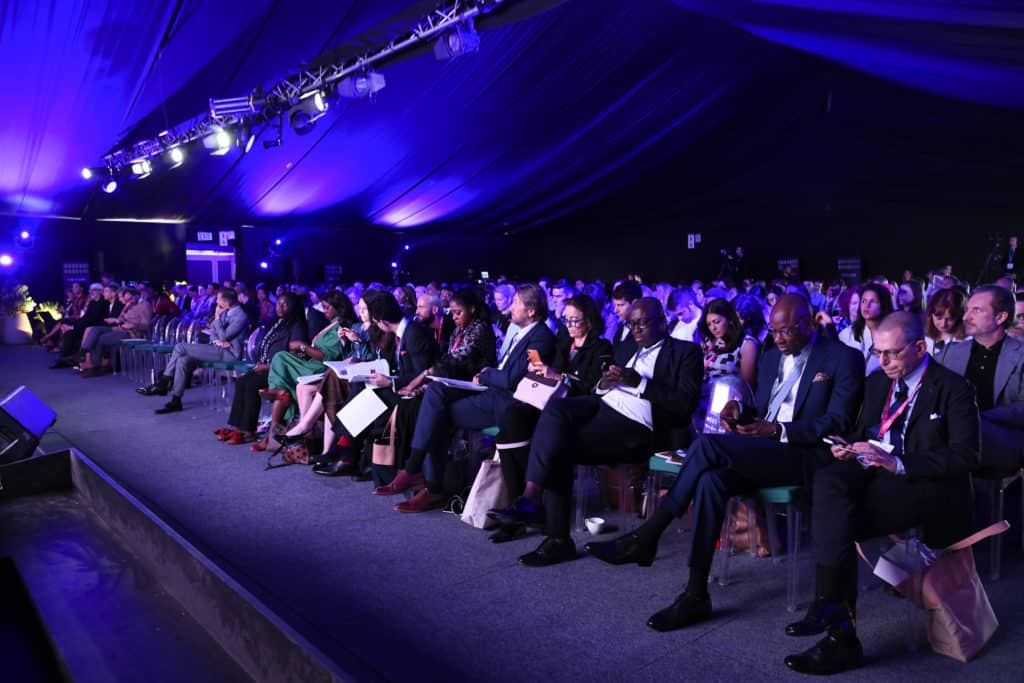This year, Condé Nast International hosted their 5th Annual CNI Luxury Conference in Cape Town, South Africa. Thanks to Suzy Menkes’ vision and audacity, the conference began its planning 2 years ago and although it only lasted 2 days, it will remain with many of the attendees for years to come.
The event featured multiple keynotes and panel discussions from the industry’s top executives, creatives and professionals across the Fashion, Luxury and Cosmetics industries. It was a packed agenda with thought provoking conversations and presentations, which left the delegates inspired to rethink their strategies moving forward.
Sessions kicked off promptly Tuesday morning with Suzy Menkes quoting her late colleague Franca Sozanni, “Anyone could have done it - but I did it”. This year's luxury conference analyzed the value of the African market for the global luxury and fashion industry. Suzy remarked that "it is time that the inspiration, the vision and the handwork across the African continent are supported and celebrated by their contribution to the world’s luxury industry.”
In this article you’ll learn…
Gucci’s Nature of Luxury
Marco Bizzarri, President and CEO, Gucci, in conversation with Suzy Menkes.
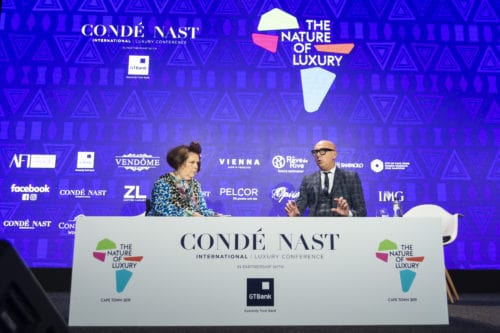
Suzy always manages to ask the questions everyone wants to know the answers to. And, although there may not be one single factor, when she asked Marco Bizzarri what the secret was to Gucci’s success, he answered simply that “everything was about the culture we wanted to create in the company.” By understanding Gucci’s cult following, it is clear that it all boils down to culture, and the culture of the company flows into their product design, communication and messaging as well as their consumer communities. Bizzarri followed his response by adding that the turnaround is also due to “luck.”
Speed Session: Noonouri
Joerg Zuber, Creator, @noonoouri; Managing Director, Opium Effect.
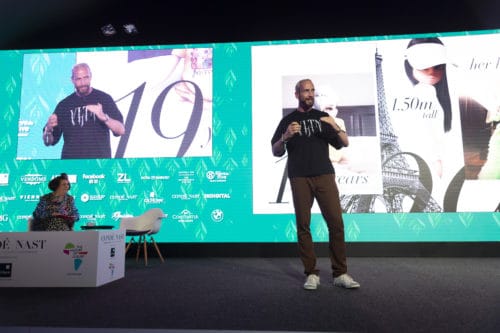
When Joerg Zuber imagined Noonouri at the age of 5, he knew exactly who he wanted to create. After nearly a lifetime of hard work and personal investment, he welcomed Noonouri to the world on February 1st, 2018 as the first haute-couture fashion GCI digital influencer. “It is important for me that when you look at her, she doesn’t look like a real human...the brand and the service has to be promoted by her and she has to put herself in the background. She is not like your classical influencer”, he continues, “she is presenting something: a new vision, a new identity, a new point of view. Her manifesto is a triple C: Cute, Curious and Couture.” Noonouri, 19 years old and 1.5m tall, likes to inform her audience, and bring products to life in new ways typically impossible in reality. Although she doesn’t have a speaking voice, he has dubbed her the “Voice of the Voiceless” in topics such as feminism, animals and nature.
Building Brand Loyalty with the Luxury Consumer of Tomorrow
Alison Bringé, Chief Marketing Officer, Launchmetrics and Morin Oluwole, Global Head of Luxury, Facebook and Instagram. Discussion moderated by Greg Williams, Editor, WIRED UK.
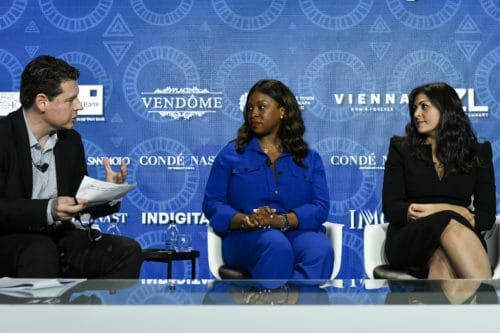
Session moderator, Greg Williams, Editor in Chief of Wired Magazine, UK sets the tone of the session by asking Alison Bringé, CMO of Launchmetrics and Morin Oluowole, Head of Luxury at Facebook the following; “As the luxury industry evolves, how does it adapt to shifting global consumer behaviors? How does an industry founded on tradition, heritage and craftsmanship address today's demanding fast-paced landscape? How do we communicate with consumers on their own terms?”
In response, Alison presented research on the current digital landscape in the US, EU and Africa using our proprietary Media Impact Value™ algorithm (MIV), which you can read more about here, and Voice centric approach to identify what brands are doing to create value, and which voices they are leveraging to do so. In her final takeaway, Alison shared that what you need to do to be successful, “is to look at the data. Think about every goal that you have for your campaign: is it awareness? is the increasing share of wallet? and choose the right voice to activate that goal.”
“How do you engage the people that already love and care about you? Owned media.” - Alison Bringé
When asked if there was more room for luxury brands to use social media more, Alison replied, “I would say that if we weren't on this panel together, but I've been on this mission for the last 6 months preaching to our clients about the value of owned media today.”
During research for our recent study, Data on the Runway, we found that during fashion week the number of posts per brand decreased but the value per post increased. Alison adds, “it's no longer about just posting to post but it's really thinking through that creative strategy and having really unique content, relevant to that channel, that’s performing better.”
Morin, Head of Luxury at Facebook, responded that “It's not a question of having the brand redefine their core values, but redefine and rethink how to communicate with the consumer knowing that their behavior has changed. They are more mobile, more digital, so they have to be aware of where the consumers are.”
It is clear that, following this panel, a brand needs to make strategic and well-thought communication plans that include and leverage the voices which will drive their MIV®.
Thoughtful Luxury: How Business and Creativity Can Drive Sustainability and Growth
Christopher Raeburn, Creative Director,RÆBURN and Timberland, Jochen Zeitz, Co-Founder and Co-Chair, Zeitz MOCAA; Co-Founder,The B Team; Founder, Zeitz Foundation and The Long Run and Sylvie Bénard, Environment Director, LVMH. Discussion moderated by Jo-Ann Strauss and Suzy Menkes.
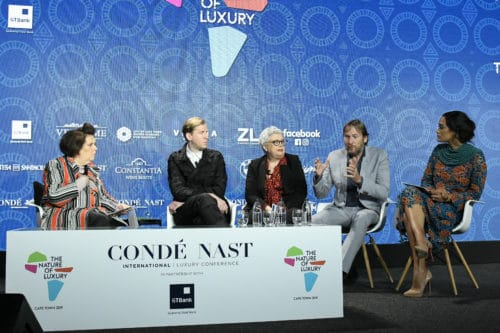
In a fiery discussion about what actions the luxury and fashion industry should take to reduce environmental impact, and how business growth can be reconciled with sustainability at the top of the agenda, designer Christopher Raeburn, environmentalist Jochen Zeitz and LVMH insider Sylvie Bénard discussed what different fashion and luxury stakeholders can bring to the table.
When talking about collective change, Jochen Zeitz, reiterated the importance of addressing where the issues are, stating that “everyone has a role and we have to specifically focus as an industry on the areas that are having the greatest impact.”
In order to communicate and advocate change, Sylvie Bénard reminded us that it is key to “understand the language of the other person” and speak on their level and to what is important to them. She shared how LVMH is working hard to reduce their impact and create positive change within the group and the group’s companies, especially through their Environmental Academy, which is available to all employees, at all levels. She has witnessed how many times people lack the information to make better decisions, and posits that once people understand, they become passionate about the issue and endeavor to find better solutions.
“Sometimes people say that environmental is a constraint - it may be a constraint - but it is a constraint that gives birth to new ideas and new solutions” - Sylvie Bérnard
That said, as a Creative Director, Christopher Raeburn defends his 3 core pillars of “Remade, Reduced and Recycled” which he takes into account in his design processes. He focuses on marrying the business side with the environmentally conscious aspects of creation to have a positive impact. He believes that it is also important to encourage others to create and purchase products which endure, can be recycled and thus can reduce the impact they have on this earth.
“This (sustainability) isn’t a trend, this is the single greatest challenge that we have and we do need to work together and be transparent.” - Christopher Raeburn
What is Luxury Today? A Platform For Activism
Simone Cipriani, Head and Founder, Ethical Fashion Initiative at the International Trade Centre.
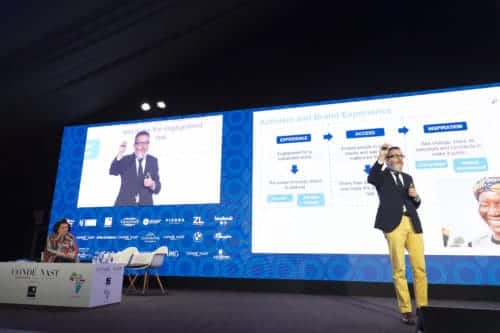
On the last day of the conference, the delegates heard Simone Cipriani, Head and Founder of Ethical Fashion Initiative at the International Trade Centre give a passionate speech on the importance of ethical fashion and creating social capital throughout the various touch-points of the supply chain.
“We want to harness the power of decent and fair working conditions to regenerate the social capital in the countries that we work with” - Simone Cipriani
Cipriani so eloquently reminded us, that in order to create a more ethical supply chain, we need to create transparency KPI’s which not only focus on sustainability and climate change issues but also on eliminating poverty and inequality through efforts such as providing living wages, decent and fair working hours, and respect for community values.
“Halala Africa, Halala”
Congratulations Africa, Congratulations.
As the conference wrapped up on Thursday afternoon, the room was filled with emotion. It was noted by several that this had been one of the most powerful CNI Luxury Conferences to date and even left Suzy misty-eyed, although she was not alone. The conference focused on the human aspect that powers our creativity and the impact our industries create; leaving us empowered to make the right choices and reminding us of the power that Africa harnesses.
The next CNI Luxury Conference will be held in Vienna, in 2020 and will dig deeper in to how the city has long acted as a gateway between the countries of Central and Eastern Europe. The program will examine how economic growth in CEE countries is creating opportunities for the global luxury industry, 30 years after the fall of Communism, as well as the intersection between art, culture and luxury.
